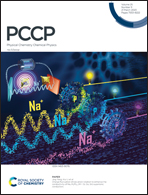Analysis of the oxygen evolution activity of layered double hydroxides (LDHs) using machine learning guidance†
Abstract
Layered double hydroxides (LDHs) are excellent catalysts for the oxygen evolution reaction (OER) because of their tunable properties, including chemical composition and structural morphology. An interplay between these adjustable properties and other (including external) factors might not always benefit the OER catalytic activity of LDHs. Therefore, we applied machine learning algorithms to simulate the double-layer capacitance to understand how to design/tune LDHs with targeted catalytic properties. The key factors of solving this task were identified using the Shapley Additive explanation and cerium was identified as an effective element to modify the double-layer capacitance. We also compared different modelling methods to identify the most promising one and the results revealed that binary representation is better than directly applying atom numbers as inputs for chemical compositions. Overpotentials of LDH-based materials as predicted targets were also carefully examined and evaluated, and it turns out that overpotentials can be predicted when measurement conditions about overpotentials are added as features. Finally, to confirm our findings, we reviewed additional experimental literature data and used them to test our machine algorithms to predict LDH properties. This analysis confirmed the very credible and robust generalization ability of our final model capable of achieving accurate results even with a relatively small dataset.



 Please wait while we load your content...
Please wait while we load your content...